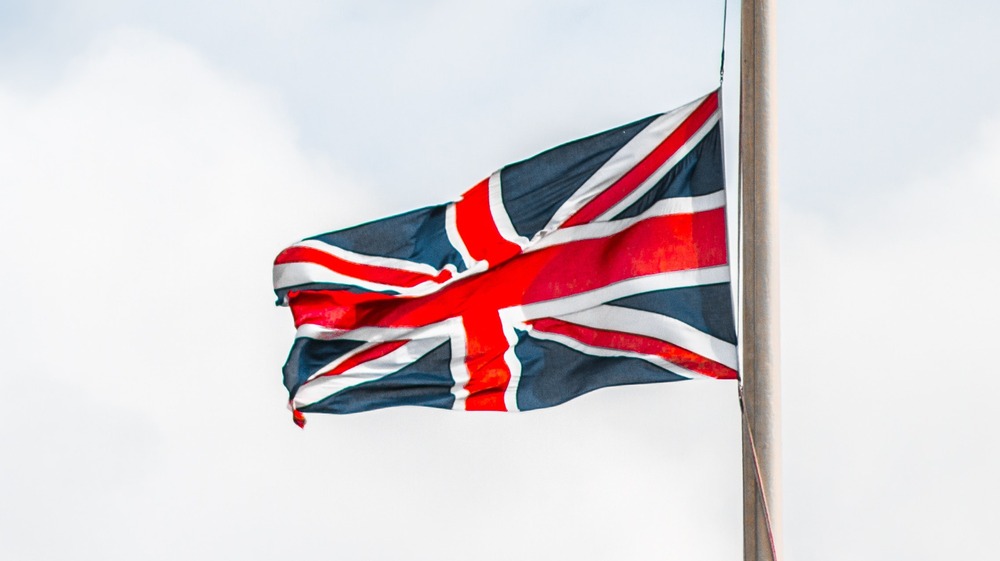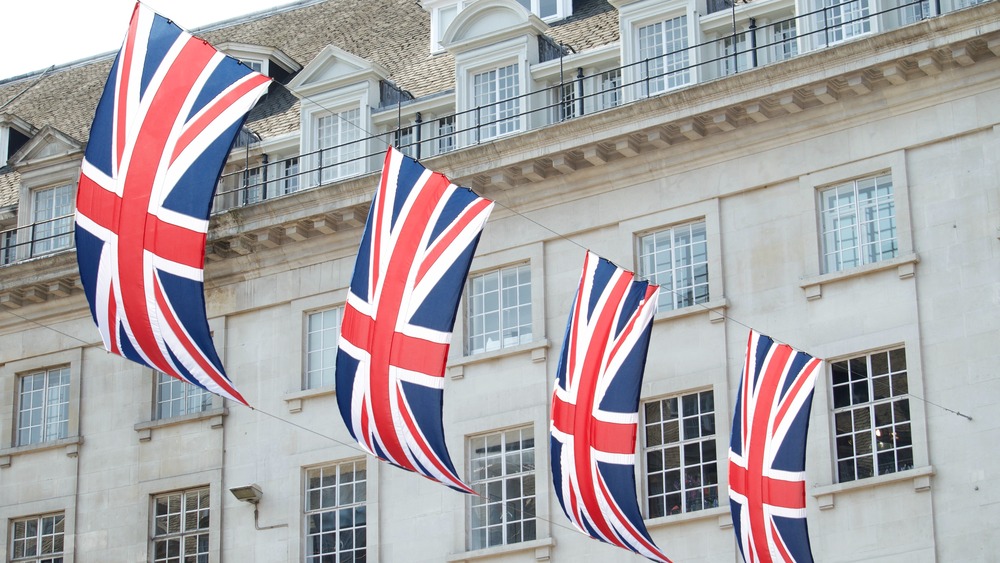What The Union Jack Flag Really Means
The flag of the United Kingdom, known as the Union Jack, is inarguably one of the most iconic flags in the world. Part of what makes the flag so special is that it is actually a combination of three different flags: those of England, Scotland, and St. Patrick, patron saint of Ireland.
According to Royal.uk, the blue background comes from the Scottish flag, which is a royal blue with a white "X," known as St. Andrew's cross, in the center. The flag of St. Patrick has a white background with a red "X" in the center. Last but not least, the English flag also has a white background, but with a red cross in the center in honor of its patron saint, Saint George. Culture Trip has a handy diagram of how the flags all fit together.
The first iteration of the Union Jack was created in 1606 after the unification of England and Scotland under King James I — and accordingly only had those two flags in its design. St. Patrick's cross was added later in 1801 following the merger of Great Britain with the Kingdom of Ireland. Since then, the Republic of Ireland has declared independence, though the separate country of Northern Ireland has remained in the U.K.
Welsh elements — including its red dragon mascot — are missing in the Union Jack. Historians have claimed that this is because Wales was considered part of England when the flag was first formed.
No one really knows where the name "Union Jack" comes from
Despite the name's popularity, there is no official explanation for the "Union Jack" moniker. According to Oxford International, the first usage of "union" when referring to the flag dates back to 1625. It is possible that the "Jack" was later added since it is a term for a small flag flown on the bowsprit of a ship, and the United Kingdom was known for its naval power. For this reason, some purists have claimed that it should be referred to as the "Union Flag" when on land.
Other historians have suggested that the term was created as a joking nickname in honor of James I, the king who formed the union between Scotland and England. Another hypothesis has claimed that it is a play on words for "jacket."
While history buffs may argue over the origin of the moniker, there is at least one thing on which they can all agree: make sure it's hanging upright. An upside down flag is considered a sign of distress.

